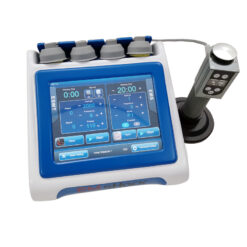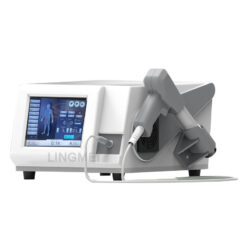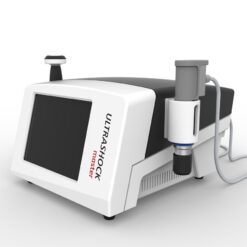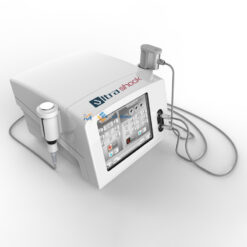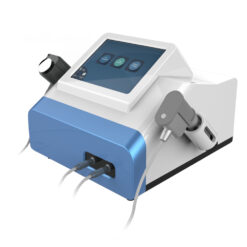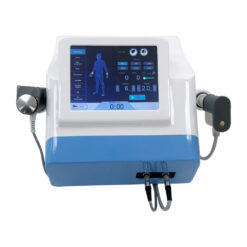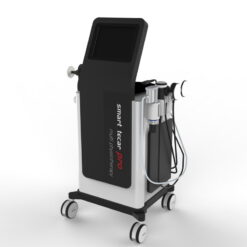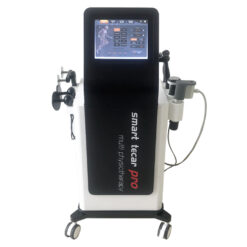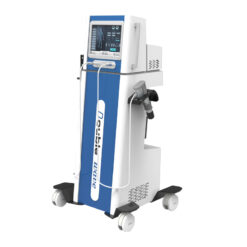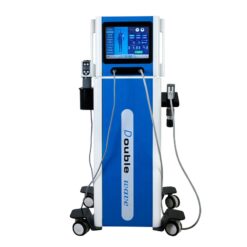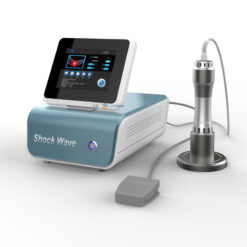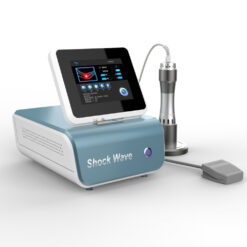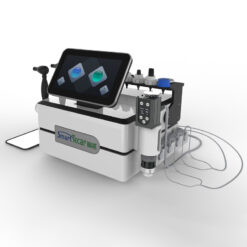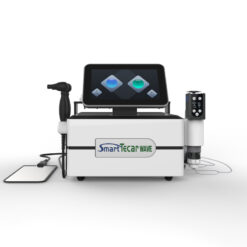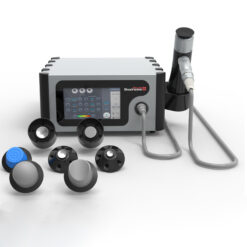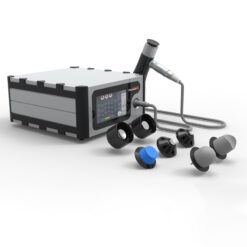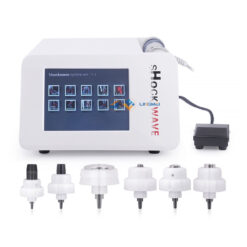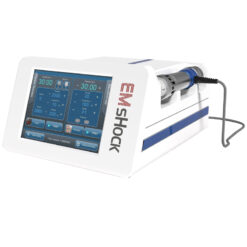A shock wave therapy machine is a medical device that generates and delivers shock waves to treat various medical conditions, primarily musculoskeletal and soft tissue disorders. These machines use focused or radial shock waves, which are high-energy acoustic waves, to stimulate tissue repair, reduce pain, and improve healing in specific areas of the body. Here’s how a shock wave therapy machine works and what it does:
- Shock Wave Generation: The machine generates shock waves through a mechanical or electromagnetic system. These shock waves are high-energy sound waves that can be focused or delivered radially, depending on the type of machine.
- Targeted Application: The healthcare provider or technician positions the shock wave therapy machine over the affected area of the patient’s body. The machine is adjusted to ensure precise targeting of the shock waves to the specific tissue or structure being treated.
- Shock Wave Delivery: When activated, the machine delivers shock waves to the targeted tissue. These waves propagate through the body and interact with the affected area. The energy from the shock waves can have several therapeutic effects:
- Stimulation of Healing: Shock waves stimulate the body’s natural healing processes by increasing blood flow to the area, promoting the release of growth factors, and enhancing tissue regeneration.
- Pain Reduction: Shock waves can disrupt pain signals in the nervous system, leading to pain relief.
- Breakdown of Calcifications: In conditions where calcium deposits or calcifications have formed in tendons or other soft tissues, shock waves can break down these deposits, allowing the body to absorb and eliminate them.
- Reduction of Inflammation: Shock waves may have anti-inflammatory effects, helping to reduce inflammation in the treated area.
- Treatment Sessions: Patients typically undergo multiple treatment sessions, with each session lasting a specified duration. The number of sessions and their frequency depend on the patient’s condition and the treatment plan developed by the healthcare provider.
- Post-Treatment Care: After each session, patients may be provided with post-treatment care instructions, which may include rest, ice application, and specific exercises to facilitate recovery.
Shock wave therapy machines are commonly used to treat conditions such as plantar fasciitis, tennis elbow, Achilles tendinopathy, calcific shoulder tendinopathy, and more. The specific protocol and parameters used during treatment can vary based on the condition being treated and the machine being used.
It’s important to note that shock wave therapy should be administered by trained healthcare professionals who are experienced in using the equipment and assessing patient suitability for the treatment. The effectiveness of shock wave therapy can vary depending on the condition and the patient, and it should be considered as part of an overall treatment plan under the guidance of a healthcare provider.







